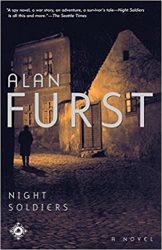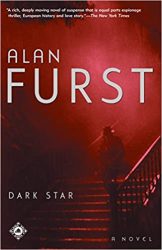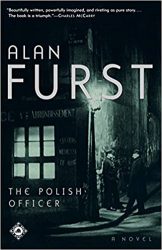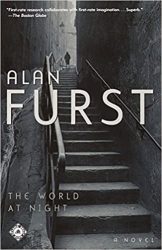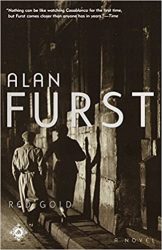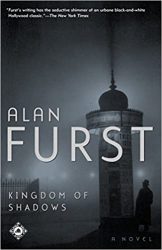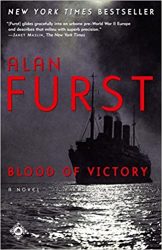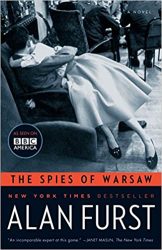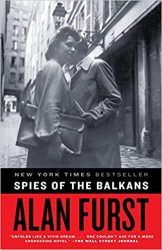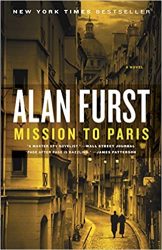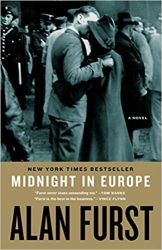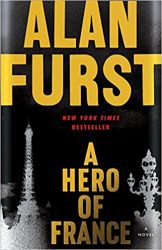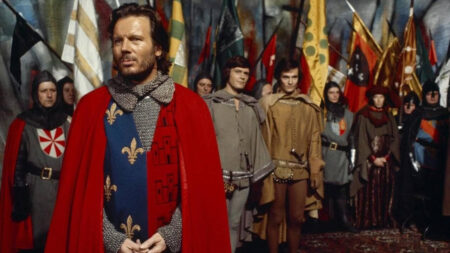Night Soldiers Books in Order: How to read Alan Furst’s series?
Written by American author Alan Furst, the Night Soldiers novels are espionage thrillers taking place in Europe, starting in the 1930s and through World War II. Those are realistic stories of (mostly) reluctant heroes in wartime, an exploration of the multiple resistance movements all over Europe, from occupied Paris to London, from the front to the well-organized Communist underground.
How to read the Night Soldiers Series in Order?
Every entry in the Night Soldiers book series works as a standalone story, but the lives of the different characters evolve from one novel to the other.
- Night Soldiers – Bulgaria, 1934. A young man is murdered by the local fascists. His brother, Khristo Stoianev, is recruited into the NKVD, the Soviet secret intelligence service, and sent to Spain to serve in its civil war. Warned that he is about to become a victim of Stalin’s purges, Khristo flees to Paris. Night Soldiers masterfully re-creates
- Dark Star – Paris, Moscow, Berlin, and Prague, 1937. André Szara, survivor of the Polish pogroms and the Russian civil wars and a foreign correspondent for Pravda, is co-opted by the NKVD, the Soviet secret intelligence service, and becomes a full-time spymaster in Paris. As deputy director of a Paris network, Szara finds his own star rising when he recruits an agent in Berlin who can supply crucial information.
- The Polish Officer – September 1939. As Warsaw falls to Hitler’s Wehrmacht, Captain Alexander de Milja is recruited by the intelligence service of the Polish underground. His mission: to transport the national gold reserve to safety, hidden on a refugee train to Bucharest.
- The World at Night – Paris, 1940. The civilized, upper-class life of film producer Jean Casson is derailed by the German occupation of Paris, but Casson learns that with enough money, compromise, and connections, one need not deny oneself the pleasures of Parisian life. Somewhere inside Casson, though, is a stubborn romantic streak. When he’s offered the chance to take part in an operation of the British secret service, this idealism gives him the courage to say yes.
- Red Gold – Autumn 1941: Set in the back streets of Paris and deep in occupied France, Red Gold moves with quiet menace as predators from the dark edge of war-arms dealers, lawyers, spies, and assassins-emerge from the shadows of the Parisian underworld. In their midst is Jean Casson, once a well-to-do film producer, now a target of the Gestapo living on a few francs a day. Casson is drawn into an ill-fated mission: running guns to combat units of the French Communist Party.
- Kingdom of Shadows – Paris, 1938. As Europe edges toward war, Nicholas Morath, an urbane former cavalry officer, spends his days working at the small advertising agency he owns and his nights in the bohemian circles of his Argentine mistress. But Morath has been recruited by his uncle, Count Janos Polanyi, a diplomat in the Hungarian legation, for operations against Hitler’s Germany.
- Blood of Victory – In the autumn of 1940, Russian émigré journalist I. A. Serebin is recruited in Istanbul by an agent of the British secret services for a clandestine operation to stop German importation of Romanian oil-a last desperate attempt to block Hitler’s conquest of Europe. Serebin’s race against time begins in Bucharest and leads him to Paris, the Black Sea, Beirut, and, finally, Belgrade.
- Dark Voyage – May 1941. At four in the morning, a rust-streaked tramp freighter steams up the Tagus River to dock at the port of Lisbon. She is the Santa Rosa, she flies the flag of neutral Spain. But she is not the Santa Rosa. She is the Noordendam, a Dutch freighter. Under the command of Captain Eric DeHaan, she sails for the Intelligence Division of the British Royal Navy, and she will load detection equipment for a clandestine operation on the Swedish coast–a secret mission, a dark voyage.
- The Foreign Correspondent – By 1938, hundreds of Italian intellectuals, lawyers and journalists, university professors and scientists had escaped Mussolini’s fascist government and taken refuge in Paris. There, amid the struggles of émigré life, they founded an Italian resistance, with an underground press that smuggled news and encouragement back to Italy. Fighting fascism with typewriters, they produced 512 clandestine newspapers. The Foreign Correspondent is their story.
- The Spies of Warsaw – War is coming to Europe. At the French embassy, in Warsaw, the new military attaché, Colonel Jean-François Mercier, a decorated hero of the 1914 war, is drawn into a world of abduction, betrayal, and intrigue in the diplomatic salons and back alleys of the city.
- Spies of the Balkans – Greece, 1940. As Adolf Hitler plans to invade the Balkans, spies begin to circle-and Costa Zannis, a senior police official, must deal with them all. He is soon in the game, working to secure an escape route for fugitives from Nazi Berlin that is protected by German lawyers, Balkan detectives, and Hungarian gangsters-and hunted by the Gestapo.
- Mission to Paris – Late summer, 1938. Hollywood film star Fredric Stahl is on his way to Paris to make a movie. The Nazis know he’s coming-a secret bureau within the Reich has been waging political warfare against France, and for their purposes, Fredric Stahl is a perfect agent of influence. What they don’t know is that Stahl has become part of an informal spy service run out of the American embassy.
- Midnight in Europe – Paris, 1938. As the shadow of war darkens Europe, democratic forces on the Continent struggle against fascism and communism, while in Spain the war has already begun. Alan Furst, whom Vince Flynn has called “the most talented espionage novelist of our generation,” now gives us a taut, suspenseful, romantic, and richly rendered novel of spies and secret operatives in Paris and New York, in Warsaw and Odessa, on the eve of World War II.
- A Hero of France – 1941. The City of Light is dark and silent at night. But in Paris and in the farmhouses, barns, and churches of the French countryside, small groups of ordinary men and women are determined to take down the occupying forces of Adolf Hitler. Mathieu, a leader of the French Resistance, leads one such cell, helping downed British airmen escape back to England.
- Under Occupation – Occupied Paris, 1942. Just before he dies, a man being chased by the Gestapo hands off a strange-looking document to the unsuspecting novelist Paul Ricard. It looks like a blueprint of a part for a military weapon, one that might have important information for the Allied forces. Ricard realizes he must try to get the diagram into the hands of members of the resistance network.
If you like Night Soldiers, you may also want to see our John le Carré reading order or our guide to Philip Kerr’s Bernie Gunther series. Don’t hesitate to follow us on Twitter or Facebook to discover more book series.
